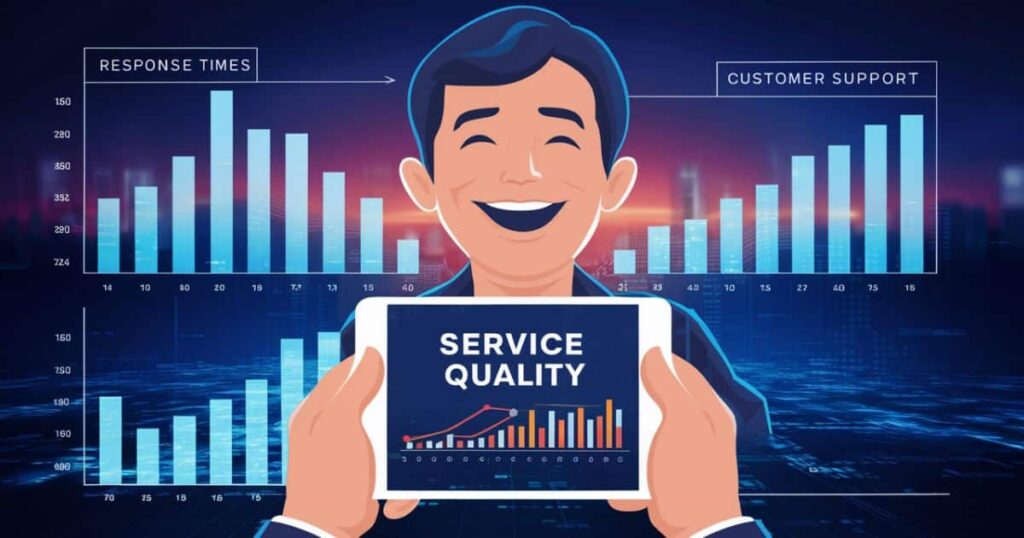When it comes to safeguarding your home, one of the most important decisions you’ll make is choosing the right protection plan. With so many options available, it can be overwhelming to determine which program truly delivers the comprehensive coverage and reliable service you deserve.
That’s why we’ve created this ultimate guide to provide an in-depth, unbiased comparison of home protection programs and help you make an informed choice.
Coverage Scope: Understanding the Breadth of Protection
At its core, a home protection plan is designed to cover the repair or replacement costs of major systems and appliances in your home. This typically includes:
- Heating, ventilation, and air conditioning (HVAC) systems
- Electrical systems
- Plumbing systems and water heaters
- Kitchen appliances (refrigerator, oven, dishwasher, etc.)
- Washer and dryer
However, the specific items covered can vary significantly between providers. For example, some plans may exclude certain appliances like built-in microwaves or garage door openers. It’s essential to understand these differences to ensure you have the comprehensive protection you need for your home.
Here’s a quick comparison of coverage scope for three major home protection providers:
| Provider | Systems Covered | Appliances Covered | Optional Add-Ons |
|---|---|---|---|
| Company A | HVAC, Electrical, Plumbing, Water Heater | Refrigerator, Oven, Dishwasher, Washer/Dryer | Pool, Spa, Well Pump |
| Company B | HVAC, Electrical, Plumbing, Water Heater | Refrigerator, Oven, Dishwasher, Washer/Dryer, Microwave, Garage Door Opener | Roof Coverage, Septic System |
| Company C | HVAC, Electrical, Plumbing, Water Heater | Refrigerator, Oven, Dishwasher, Washer/Dryer, Trash Compactor | None |
As you can see, even among these three providers, there are variations in what’s included in their standard coverage. Company B offers the most comprehensive base plan, while Company C has the most limited coverage without any optional add-ons.
To illustrate the importance of understanding coverage gaps, consider this scenario:
Case Study: The Jones family signed up for a home protection plan with Company C, thinking it would cover all their major appliances and systems. However, when their garage door opener broke down, they discovered it wasn’t included in their plan. They had to pay $350 out of pocket for a new unit.
The moral of the story? Carefully review each provider’s coverage details to ensure it aligns with your specific needs and doesn’t leave any costly gaps.
Cost Analysis: Comparing Pricing Structures and Value
Of course, cost is a major factor when choosing a home protection program. Most providers follow a similar pricing structure, with:
- A monthly or annual premium: This is the base cost of your plan, typically ranging from $30 to $60 per month or $300 to $600 per year.
- Service call fees: You’ll pay a fixed fee (usually $75 to $125) each time a contractor is dispatched for a repair or replacement.
- Potential deductibles: Some plans may also require a deductible (e.g., $500) for certain repairs or replacements.
To give you a clearer picture, here are some sample annual costs for a 2,000 sq. ft. home with different providers:
| Provider | Annual Premium | Service Call Fee | Sample Annual Cost* |
|---|---|---|---|
| Company A | $480 | $75 | $735 |
| Company B | $600 | $100 | $900 |
| Company C | $360 | $125 | $810 |
Assumes two service calls per year
While Company C has the lowest annual premium, its higher service call fee results in a comparable overall cost to Company A. Company B, with its comprehensive coverage, carries the highest price tag.
It’s important to evaluate these costs relative to the value and coverage you’re receiving. A plan with a slightly higher premium may be worth it for the added peace of mind of knowing you’re fully protected.
Additionally, don’t overlook opportunities for discounts or cost-saving measures:
- Many providers offer discounts for new customers, multi-year contracts, or bundling with other home services.
- Raising your service call fee can lower your monthly premium.
- Selecting a higher deductible (if applicable) reduces overall costs.
The key is finding the right balance between cost and the level of protection you need for your home and budget.
Read More: Locksmith DC Servleader: The Trusted Security Partner for Your Home and Business in 2024
Service Quality: Assessing Response Times and Customer Support

When an unexpected issue arises with a major home system or appliance, you need prompt, reliable service to get it resolved quickly. That’s why evaluating a home protection program’s service quality is crucial.
One key metric to consider is response time – how long it takes for a contractor to arrive after you’ve submitted a claim. Top providers typically aim for response times within 24-48 hours, but this can vary based on your location and the availability of local contractors.
Here are some recent response time statistics from major home protection companies:
- Company A: Average response time of 26 hours
- Company B: 92% of claims addressed within 48 hours
- Company C: 36-hour average for non-emergency claims, 24 hours for emergencies
In addition to prompt service, you’ll want to assess the customer support experience. Factors to consider include:
- Hours of operation (24/7 or limited?)
- In-house support staff vs. outsourced call centers
- Ability to track claims and service requests online
- Options for emergency or after-hours service
“The customer service from Company B has been excellent. Any time I’ve had an issue, their support team is friendly, knowledgeable, and gets a contractor scheduled right away. The online claims portal also makes it easy to track progress.” – Sarah T., Houston, TX
Reading customer reviews can provide valuable insights into the real-world service experience you can expect from different providers.
Customization Options: Tailoring Protection to Your Needs
While home protection plans provide comprehensive coverage, every home is unique with its own specific needs. That’s why it’s important to look for providers that offer customization options, allowing you to tailor your protection plan accordingly.
Most providers offer a base plan that covers core systems and appliances, with the ability to add on optional coverage for items like:
- Pool and spa equipment
- Well pumps
- Roof leaks
- Septic systems
- Additional appliances (ice makers, freestanding freezers, etc.)
For example, here’s how two providers structure their optional coverage add-ons:
Company A:
- Pool/Spa Coverage: +$180/year
- Well Pump: +$85/year
- Septic System: +$40/year
Company B:
- Appliance Plan (covers 6 additional appliances): +$120/year
- Roof Coverage: +$60/year
- Pool/Spa Plan: +$195/year
Being able to customize your plan ensures you only pay for the coverage you truly need. This is especially valuable if you have a pool, older home systems, or specific high-value appliances you want to protect.
When evaluating customization abilities, consider:
- The range of add-on options available
- Flexibility to build your own custom plan
- Any limits on what can be included
- How adding options impacts overall costs
By finding the right balance of core coverage and customized protection, you can tailor your home protection program to your unique situation and budget.
Technology Integration: Evaluating Smart Home Features

In our increasingly connected world, many home protection programs are embracing smart home technology to enhance their services and provide added convenience for customers.
Integration with smart home systems can offer features like:
- Remote diagnosis and monitoring: Some providers can remotely diagnose issues with connected appliances or systems, reducing service calls.
- Automatic claims submission: Smart sensors can detect problems and automatically notify the provider to initiate a claim.
- Mobile app access: Apps allow you to submit claims, track service requests, and control smart home functions from your phone.
- Energy efficiency tools: Providers may offer tools to monitor and optimize energy usage for connected systems.
For tech-savvy homeowners, these smart capabilities offer greater control, visibility, and potential cost savings through preventative maintenance and energy management.
However, it’s important to note that not all providers have fully embraced smart home integration yet. When evaluating options, consider:
- The specific smart features and connected devices supported
- How well the provider’s app and technology platform functions
- Whether smart home services are included or an added cost
- Compatibility with your existing smart home ecosystem (Alexa, Google Home, etc.)
Claims Process: Efficiency and Transparency in Handling Claims
Even with the best home protection plan, issues are bound to arise eventually that require filing a claim. When that happens, you want a claims process that is efficient, transparent, and hassle-free.
Unfortunately, many homeowners have horror stories about dealing with lengthy delays, miscommunications, and sub-par work from their home protection provider.
“Filing a claim with Company X was a nightmare. I had to call multiple times to get updates, the contractor they sent did shoddy work, and it took over 2 months to get a simple plumbing issue resolved.” – John D., Chicago, IL
To avoid these frustrations, assess how different providers handle claims by looking at factors like:
- The typical number of steps/handoffs required in the claims process
- Responsiveness in scheduling service appointments
- Use of in-house contractors vs. third-party providers
- Processes for following up and ensuring quality work
- Transparency into status updates and expected timelines
Leading home protection companies are focusing on streamlining claims through technologies like:
- Online claims portals for 24/7 tracking
- Automated updates via text/email
- Vendor credentialing and quality control processes
- Centralized contractor dispatching for faster service
For example, Company B recently implemented a “3-strike” policy where any contractor who receives 3 customer complaints is dropped from their provider network.
During your research, be sure to not only review the claims process outlined by the company, but also read firsthand customer reviews about real claim experiences.
Exclusions and Limitations: Understanding What’s Not Covered
Even the most comprehensive home protection plans have certain exclusions and limitations on what they cover. Overlooking these can lead to costly surprises down the road.
Some common exclusions found in many home protection plans include:
- Pre-existing conditions and defects
- Code violations or permit fees
- Cosmetic defects or repairs
- Removable accessories or components
- Improper maintenance issues
Additionally, most plans will not cover damage caused by natural disasters, pests, or lack of proper home maintenance.
Here’s a quick look at some key exclusions across three major providers:
| Exclusion | Company A | Company B | Company C |
|---|---|---|---|
| Pre-existing conditions | ✘ | ✘ | ✘ |
| Code violations | ✘ | ✔ | ✘ |
| Cosmetic defects | ✘ | ✘ | ✘ |
| Improper maintenance | ✘ | ✘ | ✘ |
| Haul away/disposal | ✔ | ✘ | ✔ |
As this shows, while pre-existing conditions and improper maintenance are universally excluded, there can be distinctions around code violations, cosmetic repairs, and disposal/haul away services.
To avoid denied claims and unexpected costs, thoroughly review the limitations and exclusions before purchasing any home protection plan. If anything is unclear, get clarification from the provider.
It’s also wise to stay on top of regular home maintenance to ensure your systems and appliances are in good working condition before coverage kicks in.
Reputation and Reviews: Insights from Customer Experiences
In addition to reviewing coverage details and pricing, one of the most valuable resources for evaluating home protection programs is customer reviews and ratings.
While companies can make all sorts of claims about their quality of service, it’s the unvarnished firsthand experiences of real customers that reveal the truth.
Spend time researching each provider across review sites like:
- Better Business Bureau (BBB)
- Trustpilot
- Google Reviews
- Consumer review forums
Look for patterns and consistent feedback – both positive and negative. A high volume of negative reviews around the same issues (poor service, difficulty with claims, etc.) should raise red flags.
On the flip side, large numbers of happy customers raving about great experiences can give you more confidence in a particular provider.
For a quick sample, here are some contrasting reviews for two popular home protection programs:
Company A (3.2/5 stars on Trustpilot, 2.1/5 on BBB)
“Absolutely terrible service. Contractors show up late or not at all, and they provide poor quality work. Had to fight to get reimbursed for repairs I made myself. Will never use them again.”
“They are extremely unresponsive when you need to make a claim, with long wait times and lack of follow up. Had to escalate issues multiple times to get them resolved.”
Company B (4.6/5 stars on Google, A+ from BBB)
“We’ve had an amazing experience with Company B over the past 3 years. Any time we need service, they have someone out quickly and the contractors do great work.”
“Their customer service team is always so helpful and transparent about the process. Highly recommend them for home warranty coverage!”
While you can’t put 100% stock in online reviews (which can sometimes be filtered or faked), paying attention to customer feedback can save you from choosing a subpar home protection program.
When assessing reviews, also consider:
- The company’s overall reputation and history
- How they respond to negative reviews (if at all)
- Number of reviews to gauge a complete picture
Taking the time to do thorough reputation research ensures you partner with a reliable, customer-focused provider.
Additional Benefits: Exploring Added Perks and Services

To differentiate themselves and attract customers, many home protection providers have started bundling in extra perks and services beyond the core home systems/appliances coverage.
These additional offerings vary but may include benefits like:
- Identity theft protection and credit monitoring
- Utility line/telecommunications coverage
- Energy efficiency tools and HVAC tune-ups
- Pest control services
- Home security system discounts or integration
For example, Company A includes $25,000 identity theft protection for all plan members, while Company C offers annual HVAC tune-ups valued at $150.
When evaluating these extras, think critically about whether they’re truly valuable additions or just gimmicky marketing ploys. If you already have separate identity theft protection or pest control services, bundled offerings may be redundant.
However, there can be legitimate added value and convenience in taking advantage of additional services offered through your home protection provider. Bundling multiple home services together can sometimes qualify you for discounts as well.
As you’re comparing programs, make note of any “extras” offered and assess whether they’re worth paying more for or just nice “bonuses” to have included.
Flexibility and Terms: Examining Contractual Agreements
Finally, before signing on the dotted line with any home protection program, be sure to carefully review the contractual terms and flexibility provisions.
Some key areas to investigate include:
Contract Length and Renewal Terms
- Is there an initial term length requirement (e.g. 1 year)?
- Do plans auto-renew, and if so, what are the rate increase policies?
- Are there any fees for transferring or canceling your contract early?
Workmanship Guarantees
- What guarantees back up the quality of work performed?
- Is there a specific timeframe for resolving re-service issues?
Pricing Provisions
- Are pricing and fees locked in for a certain period of time?
- Under what circumstances can rates increase upon renewal?
System Upgrade Provisions
- If a system is too old to repair economically, is it replaced with modern, energy-efficient equipment?
It’s also important to understand any special requirements around service availability, home maintenance responsibilities, and making changes to coverage.
If any terms seem overly rigid or one-sided, don’t be afraid to negotiate! Reputable home protection providers should be willing to work with customers on reasonable compromise.
Reading the full contract thoroughly and asking clarifying questions is the best way to avoid any surprises or disagreements down the road.
Final Thought
Protecting your home’s systems and appliances is essential for peace of mind. This comprehensive guide evaluated the key factors for choosing a home protection plan, including coverage scope, pricing, service quality, customization, smart home integration, claims processes, exclusions, company reputation, added perks, and contractual terms.
By carefully researching each area, you can confidently select a plan providing the right coverage at a fair price backed by reliable service. Don’t simply go with the cheapest option. Invest time to find a program tailored to your unique needs that strikes the ideal balance of protection, value and flexibility. With diligence, you can safeguard your largest investment and avoid future headaches.







